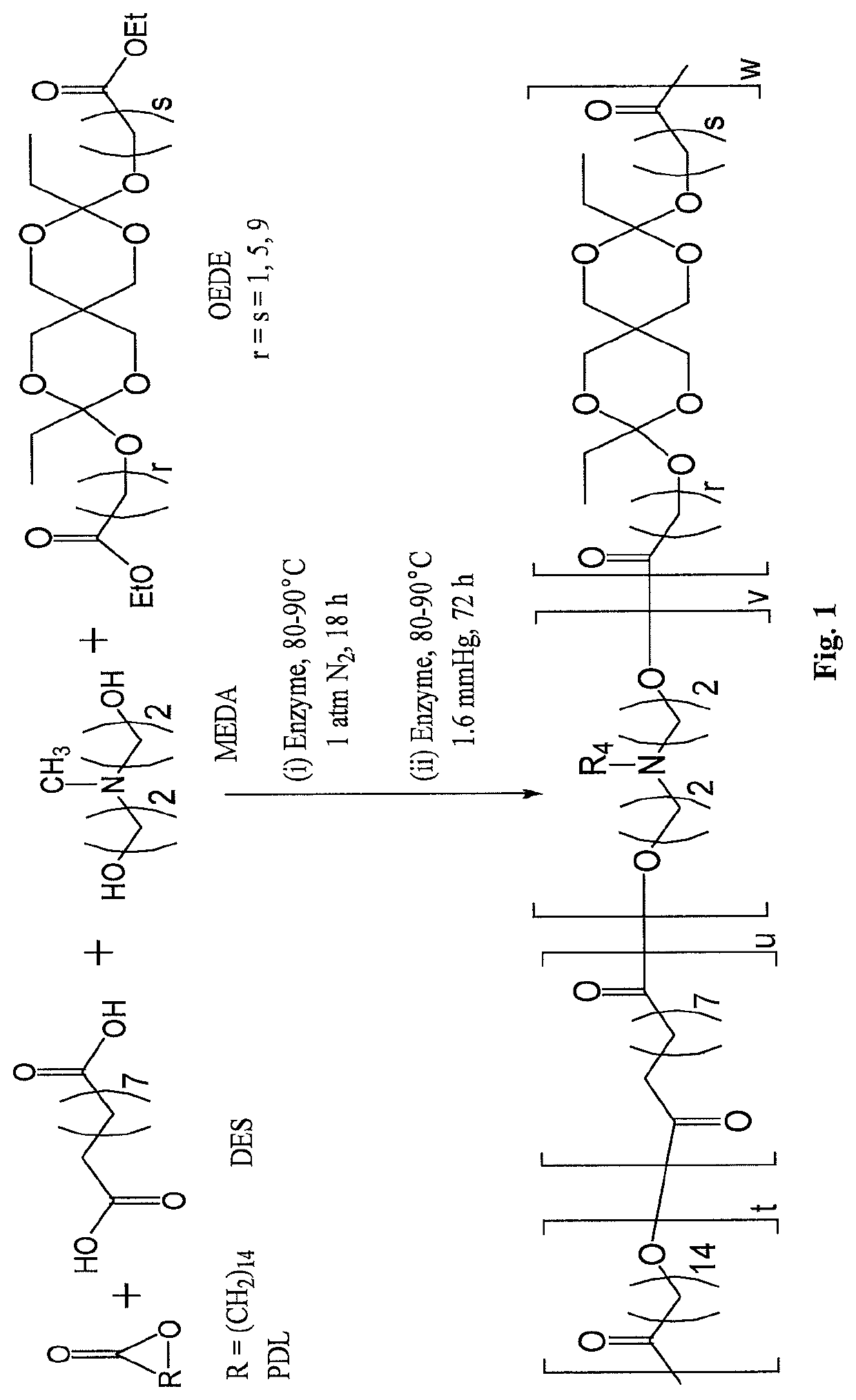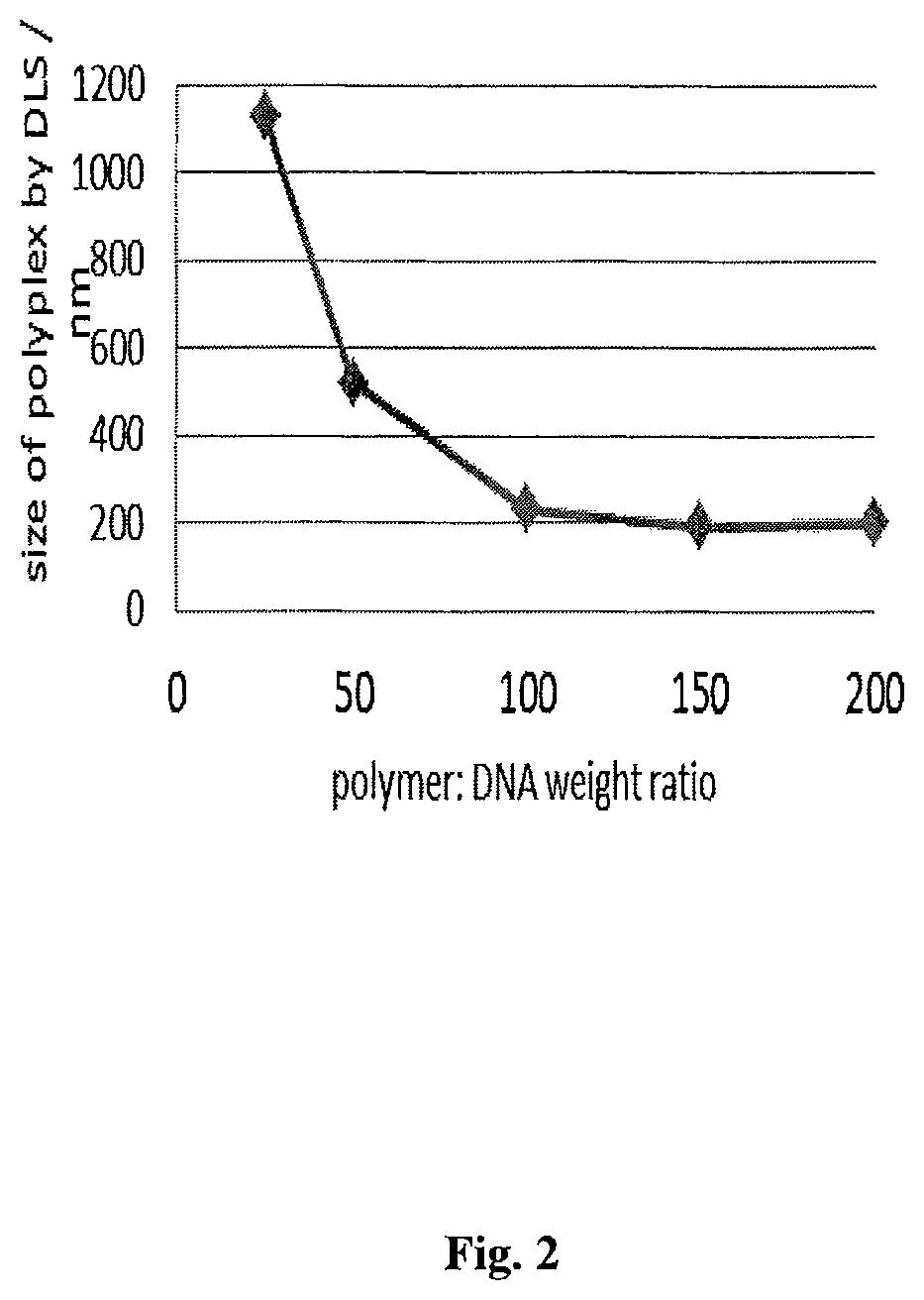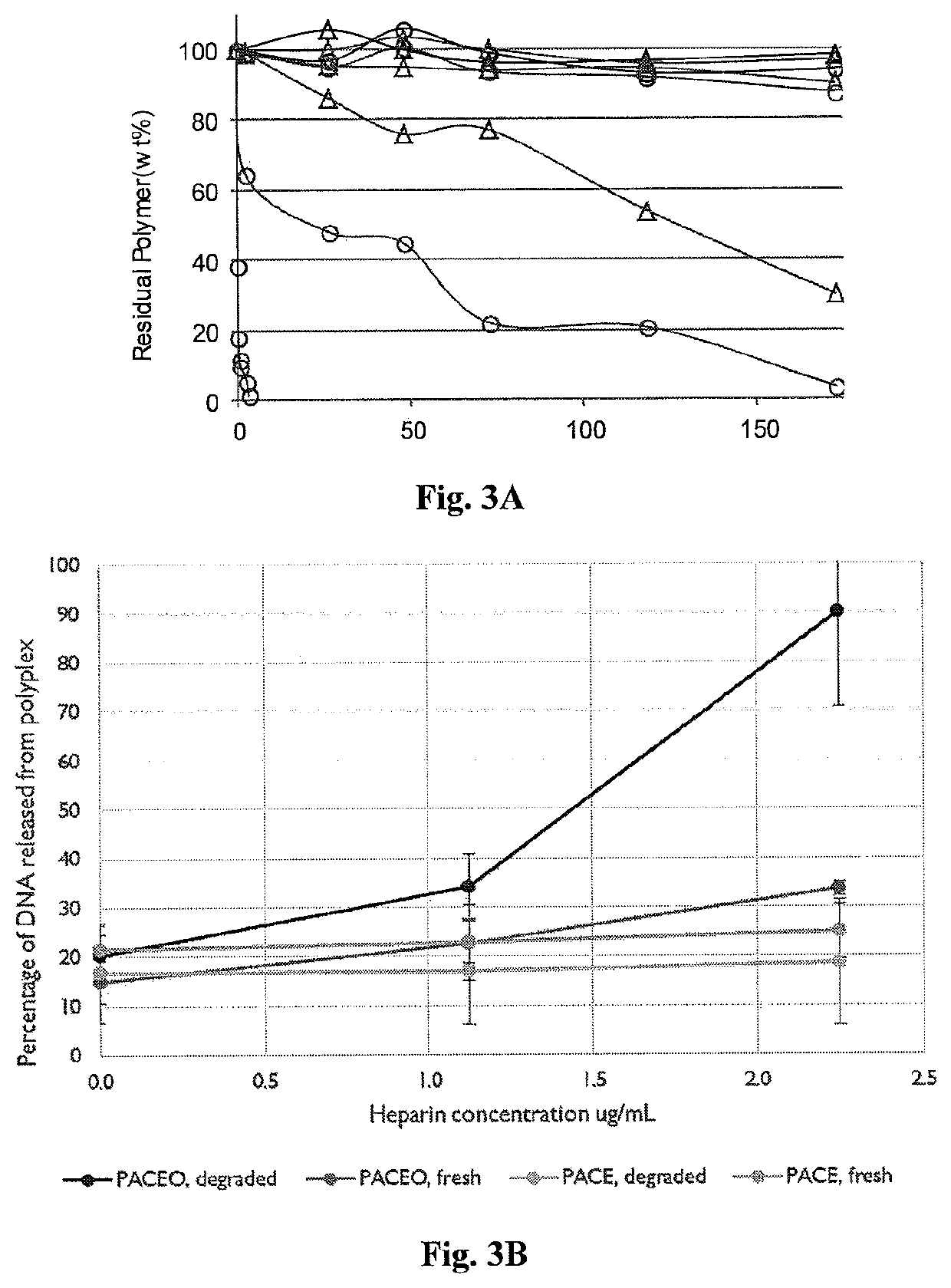Formulations for targeted release of agents under low pH conditions and methods of use thereof
a technology of low ph conditions and formulations, applied in the field of polymers, can solve the problems of complexes that cannot be easily broken or aggregated, many cationic, and exhibit substantial toxicity, and achieve the effects of improving polymers, high efficiency in vitro, and effective delivery of therapeutic, diagnostic, and/or prophylactic agents
- Summary
- Abstract
- Description
- Claims
- Application Information
AI Technical Summary
Benefits of technology
Problems solved by technology
Method used
Image
Examples
example 1
and Characterization of Poly(Amine-Co-Ester-Co-Ortho Ester) Quaterpolymers
[0395]Materials and Methods
[0396]Materials
[0397]ω-pentadecalactone (PDL), diethyl sebacate (DES), N-methyldiethanolamine (MEDA), 3,9-Divinyl-2,4,8,10-tetraoxaspiro[5.5]undecane (DTSU), ethyl glycolate, ethyl 6-hydroxy hexanoate and methyl 10-hydroxydecanoate were purchased from Aldrich Chemical Co. and were used as received. Immobilized Candida antarctica lipase B (CALB) supported on acrylic resin (Novozym 435), potassium t-butoxide, chloroform, dichloromethane, hexane, pentane, diphenyl ether, tetrahydrofuran, ethylene diamine, triethylamine and chloroform-d were also obtained from Aldrich Chemical Co. The lipase catalyst was dried at 50° C. under 2.0 mmHg for 20 h prior to use.
[0398]HEK293 cells and U87MG cells were obtained from American Type Culture Collection (Manassas, Va.) and grown at 37° C. under 5% CO2 atmosphere in Dulbecco's modified Eagle's medium (DMEM) containing 10% fetal bovine serum and 1% pe...
PUM
| Property | Measurement | Unit |
|---|---|---|
| weight average molecular weight | aaaaa | aaaaa |
| weight average molecular weight | aaaaa | aaaaa |
| molecular weight | aaaaa | aaaaa |
Abstract
Description
Claims
Application Information
 Login to View More
Login to View More - R&D
- Intellectual Property
- Life Sciences
- Materials
- Tech Scout
- Unparalleled Data Quality
- Higher Quality Content
- 60% Fewer Hallucinations
Browse by: Latest US Patents, China's latest patents, Technical Efficacy Thesaurus, Application Domain, Technology Topic, Popular Technical Reports.
© 2025 PatSnap. All rights reserved.Legal|Privacy policy|Modern Slavery Act Transparency Statement|Sitemap|About US| Contact US: help@patsnap.com



